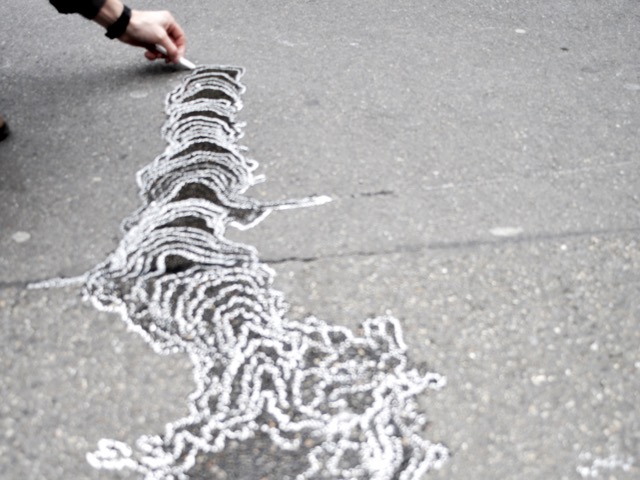
Landschaft zu lesen bedeutet, in der Landschaftsarchitektur das Gefüge von geographischen, naturräumlichen oder kulturhistorischen Spuren als Basis für gegenwärtige Formen und zukünftige Gestaltung zu verstehen. Diese Profile aus landschaftlichen «Geschichten» bilden Kernthemen des TheoryLabs der Professur Girot.
In der Gestaltung von Landschaft ist das Wissen um deren Geschichte (im wahrsten Sinne des Wortes) grundlegend. In der Theorie wird dabei gerne die Metapher des Palimpsests angeführt, weil diese das Konzept des Wiederbeschreibens aufgreift: bestehender Text wird abgetragen, um Neuem Platz zu machen. Dabei verschwinden die vorherigen Wörter aber nicht gänzlich, sondern gestalten als durchschimmernde Spuren die neuen Linien mit. Ein Textrelief von Geschichten entsteht – Schichten aus Geschichten.
In ähnlicher Weise wird auch Landschaft geformt. Die geographischen, naturräumlichen und kulturhistorischen Schichten zeugen von der Vergangenheit und formen die Basis für die Gegenwart. Im TheoryLab der Professur Christophe Girot bilden die geschichtliche Recherche und theoretische Analyse im Spektrum von unterschiedlichen Themen, Ansätzen und Massstäben den gemeinsamen Nenner, um Landschaft «lesen» zu lernen:
Das «Site Reading» von Deltas
Im Frühlingssemester 2016 präsentierten eingeladene Landschaftsarchitektinnen, Architektinnen und eine Künstlerin in der Vortragsreihe Delta Dialogues ihre Methoden für das «Site Reading» von Deltas – weiträumige Wasserlandschaften des ständigen Wandels. Das aktuelle Wahlfach im Frühjahr 2017 widmet sich dem Labyrinth. Ausgehend von seinen mythologischen Wurzeln und der Entstehung historischer Heckenlabyrinthe erproben die Studierenden die Lust am Verlorengehen und Wiederfinden und ermessen die Relevanz des Labyrinth-Motivs im 21. Jahrhundert.
Die laufenden Forschungsprojekte am TheoryLab führen unter anderem nach Seoul, wo die Analyse und Diskussion von kulturhistorisch verwurzelten Designkonzepten zu einem verbesserten Verständnis und nachhaltigen Umgang in der zeitgenössischen Landschaftsarchitektur Südkoreas beiträgt. Oder sie führen nach Zürich, wo anhand von Archivrecherchen und Objektanalysen die Bedeutung exotischer Gehölze in der Repräsentationskultur des Bürgertums im 19. Jahrhundert untersucht wird.
Isabelle Fehlmann, Research Associate TheoryLab der Professur Girot
Bild: Im Rahmen der Veranstaltung «Delta Dialogues» zeichnen Studierende die Spuren von Wasser auf Asphalt nach: Das Beobachten von Veränderungen als eine Methode «Landschaft zu lesen». Fotografie: Susann Ahn, TheoryLab.